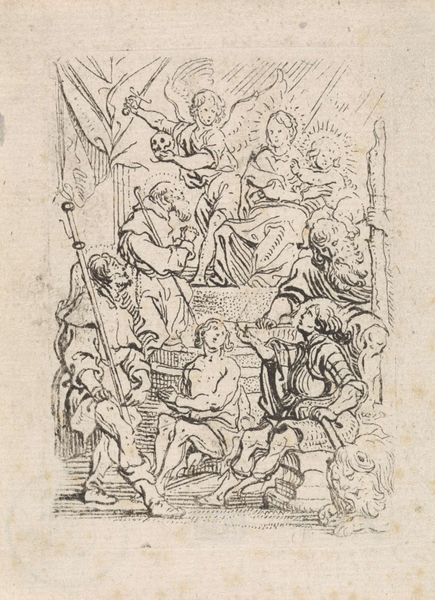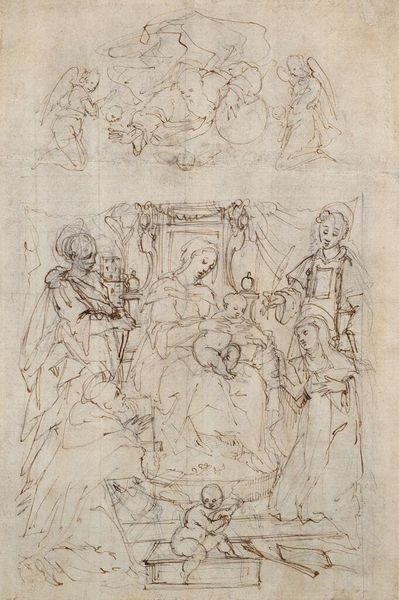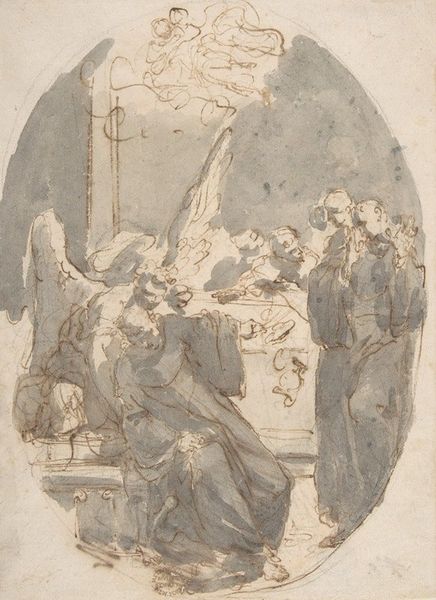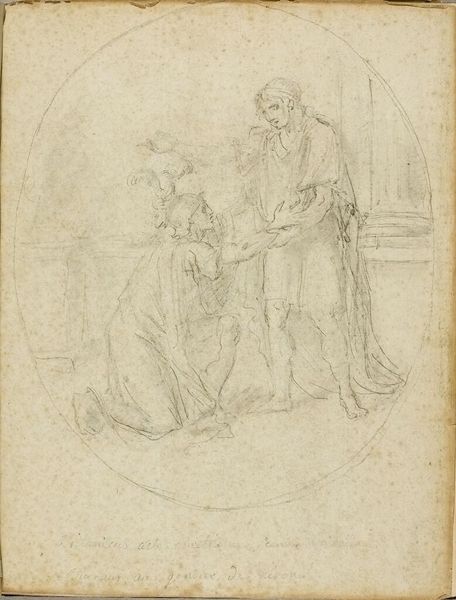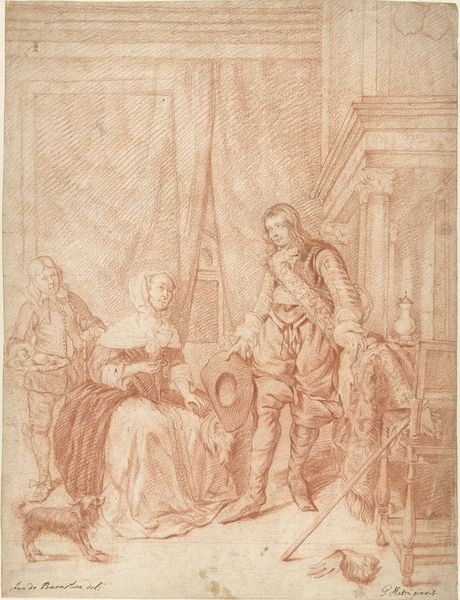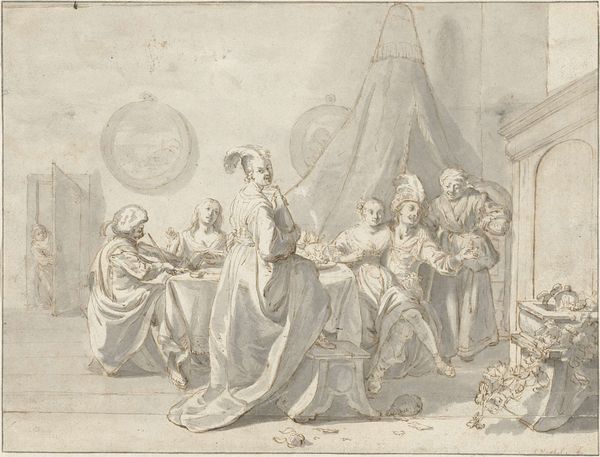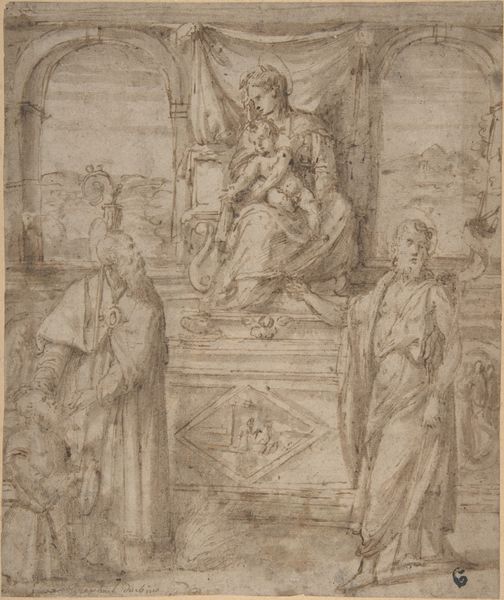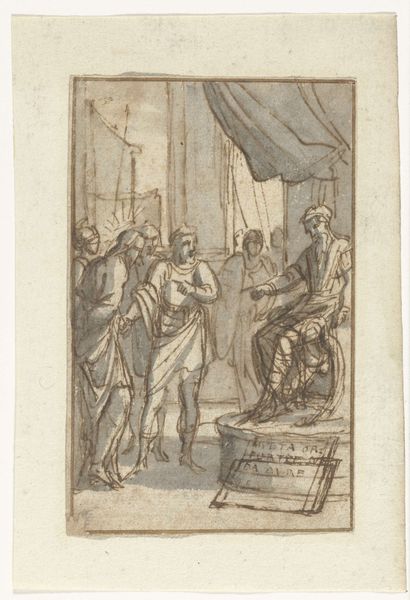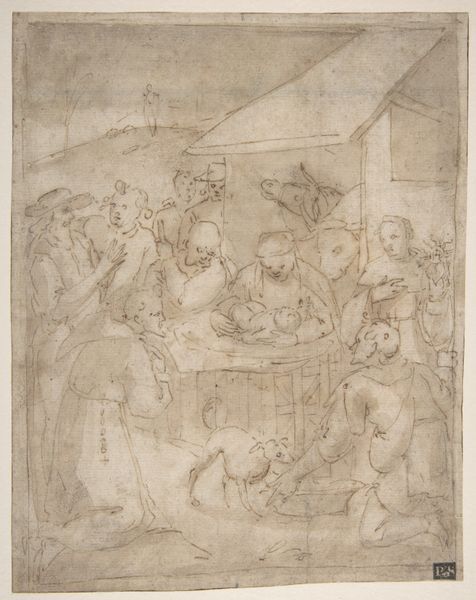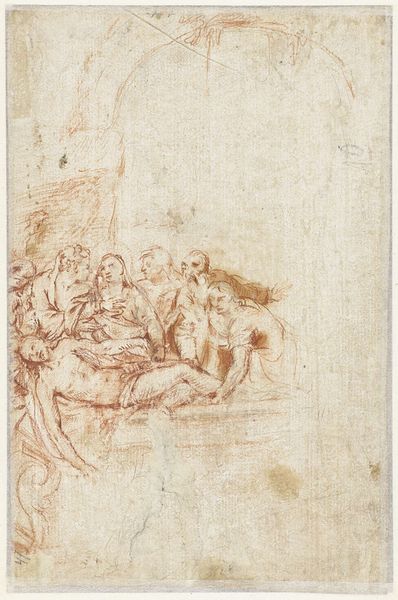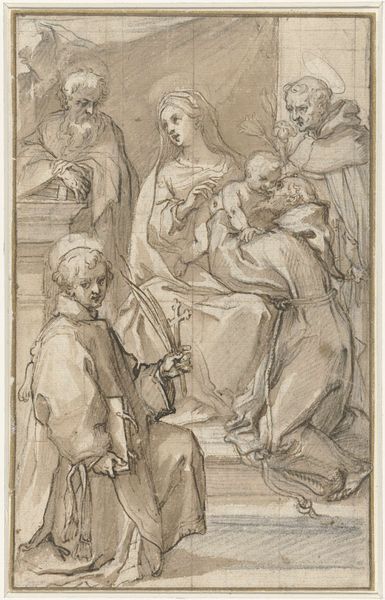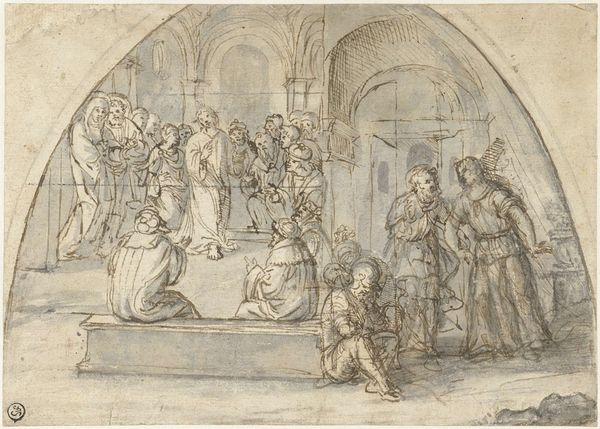
drawing, paper, pencil
#
drawing
#
medieval
#
narrative-art
#
pen sketch
#
pencil sketch
#
figuration
#
paper
#
11_renaissance
#
pencil
Dimensions: height 232 mm, width 208 mm
Copyright: Rijks Museum: Open Domain
Curator: This drawing, attributed to Monogrammist CM, a German artist, depicts "Christus in de synagoge te Nazareth," or "Christ in the Synagogue at Nazareth." Created sometime between 1800 and 1900, it’s rendered in pencil and pen on paper. Editor: Immediately, I’m struck by its stark simplicity. The pale grey of the pencil sketch gives the whole scene a ghostly, almost unsettling feeling. The circle format encloses it tightly, creating a sense of constraint. Curator: That constraint, I think, reflects the artistic and material limitations faced. Pencil and paper were readily accessible, and the circular format—a tondo—was often used for preparatory studies or less formal commissions. There is a medieval aesthetic in this. Editor: I see that medieval connection through the faces themselves. They’re somewhat stylized, almost mask-like. Look at the way the figures gesture. All that directs our attention toward Christ pointing to the text; his face is the beacon of the artwork. Curator: True. The image invites scrutiny. The clothing, for instance, would have been everyday garb, reflecting the accessible production method. You have the central action highlighted as such. Editor: Yet, while it presents as something approachable and functional, the enduring iconography transcends mere accessibility. The book Christ holds, that open gesture—they’re imbued with the weight of religious narrative. Curator: Exactly! What's truly significant is the function of those images and materials. Pencil and paper became vessels for potent symbols. It reflects the broader historical trend towards the distribution and reproduction of such content. Editor: And that's the compelling tension, isn't it? Between the humble means of production and the enduring power of its message, resonating even now from the Rijksmuseum. Curator: Indeed. It causes one to contemplate the relationship between the maker, the message, and the audience. Editor: Leaving us with a glimpse into the persistent need to visualise a shared cultural memory.
Comments
No comments
Be the first to comment and join the conversation on the ultimate creative platform.
